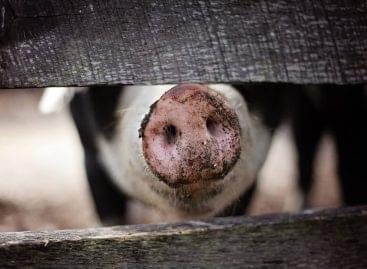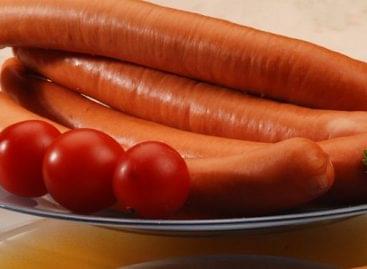The state of play in the meat industry
Edit Menczel, secretary of the Livestock and Meat Interprofessional Organisation and Marketing Board (VHT) revealed that production prices in the pig sector grew in 2017, because of which processing companies also increased prices. The problem is that retailers aren’t willing to accept this. In June 2017 there were 2.8 million pigs in Hungary, 200,000 less than in 2016. Thanks to the VAT cut, the sector whitened a lot. At the moment the production price of slaughter pig is below HUF 380/kg.

Edit Menczel
secretary
Livestock and Meat Interprofessional Organisation and Marketing Board (VHT)
The workforce shortage causes great problems in the meat industry too. This is true despite the fact that the sector is successful; there is great demand for Hungarian pork in Asia, especially in Japan and South Korea. As for the domestic market, the Quality Hungarian Pork (KMS) trademark guarantees that shoppers get top-quality, reliable meat. Presently 2 million pigs comply with the requirements of the KMS trademark programme.
Tamás Éder, president of the Hungarian Meat Industry Association added that in the first half of 2017 meat processing companies increased their output by 12 percent, in part due to the whitening of the sector. Shoppers show growing demand for special, very tasty products which are produced in a smaller quantity (ham, sausage, etc.), and they are willing to pay more for these. The situation of meat products became a bit worse after the modification of certain meat product criteria – e.g. higher meat content is now required – in the Hungarian Food Book.

Tamás Éder
president
Hungarian Meat Industry Association
Mr Éder admitted food companies weren’t happy about the mandatory chamber (Hungarian Chamber of Agriculture – NAK) membership at first: they thought that the dominance of agri-businesses would result in measures that hurt the interests of processing companies. Although it did seem for a while that these worries weren’t unfounded, by now the two sides have got to understand each other better. What is more, they have managed to use the chamber’s lobbying power in important matters several times. One of the fields where food industry enterprises profited form this was the bigger budget for development project grants from EU money. The chamber’s strong support of the VAT cut was also a great help. //
Related news
The pork sector is in a difficult situation: rising costs, falling consumption and changing habits
🎧 Hallgasd a cikket: Lejátszás Szünet Folytatás Leállítás Nyelv: Auto…
Read more >The discounters reduce the price of Easter ham with imports: what can we expect this year?
🎧 Hallgasd a cikket: Lejátszás Szünet Folytatás Leállítás Nyelv: Auto…
Read more >NAK-Húszövesség: a significant turnover of hot dogs is expected at the end of the year again this year
🎧 Hallgasd a cikket: Lejátszás Szünet Folytatás Leállítás Nyelv: Auto…
Read more >Related news
Fidelity Kitekintés 2026: Ne becsüljük alá az inflációt!
🎧 Hallgasd a cikket: Lejátszás Szünet Folytatás Leállítás Nyelv: Auto…
Read more >Company Trend 2025 – domestic businesses under strong pressure, in a negative trend
🎧 Hallgasd a cikket: Lejátszás Szünet Folytatás Leállítás Nyelv: Auto…
Read more >Surprising ordering statistics: foodora sampled the ordering habits of Hungarians in 2025
🎧 Hallgasd a cikket: Lejátszás Szünet Folytatás Leállítás Nyelv: Auto…
Read more >







